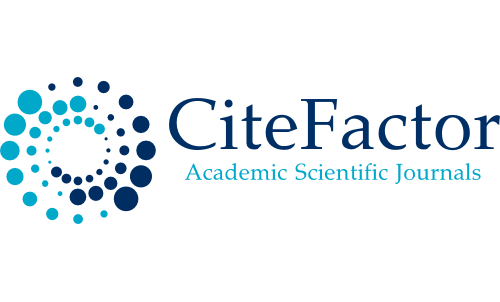Efeitos antifúngico e antiaflatoxigênico de timol e carvacrol em Aspergillus flavus
DOI:
https://doi.org/10.17765/2176-9206.2021v14n1.e7727Palavras-chave:
Aflatoxinas, Agentes antimicrobianos, Micotoxinas, Produtos naturais, TerpenosResumo
O objetivo deste estudo foi avaliar os efeitos do timol e carvacrol contra Aspergillus flavus e a produção de aflatoxinas. Foram determinadas a concentração inibitória mínima (CIM), o espectro fungitóxico e a atividade inibidora de micotoxinas pelo timol e carvacrol. Os resultados mostraram que timol e carvacrol exibiram ação fungicida de acordo com a CIM de 2500 e 30 µg mL-1, respectivamente. Tanto o timol quanto o carvacrol inibiram significativamente o crescimento de A. flavus (p<0,05) a partir de 600 e 15 µg mL-1, respectivamente. A biomassa fúngica, estimada pela determinação da concentração de ergosterol, foi significativamente reduzida (p <0,05) em 2500 µg mL-1 de timol e 250 µg mL-1 de carvacrol. O timol e o carvacrol exibiram efeitos antiaflatoxigênicos em 600 e 125 µg mL-1, respectivamente. O timol e o carvacrol exibiram atividade antifúngica, mas não exibiram alta atividade antiaflatoxigênica. Carvacrol e timol podem ser considerados como potentes compostos naturais antifúngicos contra A. flavus.Downloads
Referências
Joint FAO/WHO Expert Committee on Food Additives (JECFA). Evaluation of certain contaminants in food: eighty-third report of the Joint FAO/WHO Expert Committee on Food Additives. Geneva: WHO Technical Report Series, N. 1002; 2017.
Rushing BR, Selim MI. Aflatoxin B1: A review on metabolism, toxicity, occurrence in food, occupational exposure, and detoxification methods. Food Chem Toxicol. 2019; 124, 81-100.
Ochoa-Velasco CE, Navarro-Cruz AR, Vera-López O, Palou E, Avila-Sosa R. Growth modeling to control (in vitro) Fusarium verticillioides and Rhizopus stolonifer with thymol and carvacrol. Rev Argent Microbiol. 2018; 50, 70-74.
Food and Drug Administration (FDA). Foodborne Pathogenic Microorganisms and Natural Toxins. 2nd ed. Silver Spring: U.S. Department of Health and Human Services, 2012.
An P, Yang X, Yu J, Qi J, Ren X, Kong Q. α-Terpineol and terpene-4-ol, the critical components of tea tree oil, exert antifungal activities in vitro and in vivo against Aspergillus niger in grapes by inducing morphous damage and metabolic changes of fungus. Food Control. 2019; 98, 42-53.
Bomfim NS, Nakassugi LP, Oliveira JFP, Kohiyama CY, Mossini SAG, Grespan R, Nerilo SB, Mallmann CA, Abreu Filho BA, Machinski Jr M. Antifungal activity and inhibition of fumonisin production by Rosmarinus officinalis L. essential oil in Fusarium verticillioides (Sacc.) Nirenberg. Food Chem. 2015; 166, 330-336.
Dammak I, Hamdi Z, El Euch SK, Zemni H, Mliki A, Hassouna M, Lasram S. Evaluation of antifungal and anti-ochratoxigenic activities of Salvia officinalis, Lavandula dentata and Laurus nobilis essential oils and a major monoterpene constituent 1,8-cineole against Aspergillus carbonarius. Ind Crops Prod. 2019; 128, 85-93.
Abbaszadeh S, Aharifzadeh A, Ahokri H, Khosravi AR, Abbasdeh A. Antifungal efficacy of thymol, carvacrol, eugenol and menthol as alternative agents to control the growth of food relevant fungi. J Mycol Med. 2014; 24, 51-56.
Prakash B, Kedia A, Mishra PK, Dwivedy AK, Dubey NK. Assessment of chemically characterized Rosmarinus officinalis L. essential oil and its major compounds as plant-based preservative in food system based on their efficacy against food-borne moulds and aflatoxin secretion and as antioxidant. Int J Food Sci Technol. 2015; 50, 1792-1798.
Wang Y, Zeng X, Zhou Z, Xing K, Tessema A, Zeng H, Tian J. Inhibitory effect of nerol against Aspergillus niger on grapes through a membrane lesion mechanism. Food Control. 2015; 55, 54-61.
Wang H, Yang Z, Ying G, Yang M, Nian Y, Wei F. Antifungal evaluation of plant essential oils and their major components against toxigenic fungi. Ind Crops Prod. 2018; 120, 180-186.
Lasram S, Zemni H, Hamdi Z, Chenenaoui S, Houissa H, Tounsi MS, Ghorbel A. Antifungal and antiaflatoxigenic activities of Carum carvi L., Coriandrum sativum L. seed essential oils and their major terpene component against Aspergillus flavus. Ind Crops Prod. 2019; 134, 11-18.
Palou L, Ali A, Fallik E, Romanazzi G. GRAS, plant- and animal-derived compounds as alternatives to conventional fungicides for the control of postharvest disease of fresh horticultural produce. Postharvest Biol Technol. 2016; 122, 41-52.
Clinical and Laboratory Standards Institute (CLSI). Reference Method for broth dilution antifungal susceptibility testing of conidium-forming filamentous fungi. NCCLS document M38-A2. Wayne: National Committee for Clinical Laboratory Standards, 2008.
Kohiyama CY, Ribeiro MMY, Mossini SAG, Bando E, Bomfim NS, Nerilo SB, Rocha GHO, Grespan R, Mikcha JMG, Machinski Jr M. Antifungal properties and inhibitory effects upon aflatoxin production of Thymus vulgaris L. by Aspergillus flavus Link. Food Chem. 2015; 173, 1006-1010.
Tariq S, Wani S, Rasool W, Shafi K, Bhat MA, Prabhakar A, Shalla AH, Rather MA. A comprehensive review of the antibacterial, antifungal and antiviral potential of essential oils and their chemical constituents against drug-resistant microbial pathogens. Microb Pathog. 2019; 134, 103580(1-20).
Association of Official Agricultural Chemists International (AOAC). Natural Toxins. In: AOAC. Official Methods of Analysis of the Association of Official Analytical Chemists. 20th ed. Arlington: The Association of Official Analytical Chemists; 2016. p. 2-46.
Braga PC, Culini M, Alfieri M, Dal Sasso M. Thymol inhibits Candida albincans biofilm formation and mature biofilm. Int J Antimicrob Agents. 2008; 31, 472-477.
Pérez-Alfonso CO, Martínez-Romero D, Zapata PJ, Serrano M, Valero D, Castilho S. The effects of essential oils carvacrol and thymol on growth of Penicillium digitatum and Penicillium italicum involved in lemon decay. Int J Antimicrob Chemother. 2012; 158, 101-106.
Gandomi H, Misaghi A, Basti AA, Bokaei S, Khosravi A, Abbasifar A, Javan AJ. Effect of Zataria multiflora Boiss essential oil on growth and aflatoxin formation by Aspergillus flavus in culture media and cheese. Food Chem Toxicol. 2009; 47, 2397-2400.
Prakash B, Dubey NK, Kedia A, Singh A, Singh P. Efficacy of essential oil combination of Curcuma longa L. and Zingiber officinale Rosc. as a postharvest fungitoxicant, aflatoxin inhibitor and antioxidant agent. J Food Saf. 2012; 32, 279-288.
Ahmad A, Khan A, Akhtar F, Yousuf S, Xess I, Kham LA, Manzoor N. Fungicidal activity of thymol and carvacrol by disrupting ergosterol biosynthesis and membrane integrity against Candida. Eur J Clin Microbiol Infect Dis. 2011; 30, 41-50.
Prakash B, Kedia A, Mishra PK, Dwivedy AK, Dubey NK. Assessment of chemically characterized Rosmarinus officinalis L. essential oil and its major compounds as plant-based preservative in food system based on their efficacy against food-borne moulds and aflatoxin secretion and as antioxidant. Int J Food Sci Technol. 2015; 50, 1792-1798.
Nerilo SB, Rocha GHO, Tomoike C, Mossini SAG, Grespan R, Mikcha JMG, Machinski Jr M. Antifungal properties and inhibitory effects upon aflatoxin production by Zingiber officinale essential oil in Aspergillus flavus. Int J Food Sci Technol. 2016; 51, 286-292.
Razzaghi-Abyanch M, Shams-Ghahfarokh M, Yoshinari T, Mohammad-Bagher R, Jaimand K, Nagasawa H, Sakuda S. Inhibitory effects of Satureja hortensis L. essential oil on growth and aflatoxin production by Aspergillus parasiticus. Int J Food Microbiol. 2008; 123, 228-233.
Arquivos adicionais
Publicado
Como Citar
Edição
Seção
Licença
A submissão de originais para a revista Saúde e Pesquisa implica na transferência da Carta Concessão de Direitos Autorais, pelos autores, dos direitos de publicação digital para a revista após serem informados do aceite de publicação.A Secretaria Editorial irá fornecer da um modelo de Carta de Concessão de Direitos Autorais, indicando o cumprimento integral de princípios éticos e legislação específica. Os direitos autorais dos artigos publicados nesta revista são de direito do autor, com direitos da revista sobre a primeira publicação. Os autores somente poderão utilizar os mesmos resultados em outras publicações, indicando claramente a revista Saúde e Pesquisa como o meio da publicação original. Em virtude de tratar-se de um periódico de acesso aberto, é permitido o uso gratuito dos artigos, principalmente em aplicações educacionais e científicas, desde que citada a fonte. A Saúde e Pesquisa adota a licença Creative Commons Attribution 4.0 International.
A revista se reserva o direito de efetuar, nos originais, alterações de ordem normativa, ortográfica e gramatical, com vistas a manter o padrão culto da língua e a credibilidade do veículo. Respeitará, no entanto, o estilo de escrever dos autores. Alterações, correções ou sugestões de ordem conceitual serão encaminhadas aos autores, quando necessário. Nesses casos, os artigos, depois de adequados, deverão ser submetidos a nova apreciação. As opiniões emitidas pelos autores dos artigos são de sua exclusiva responsabilidade.


















